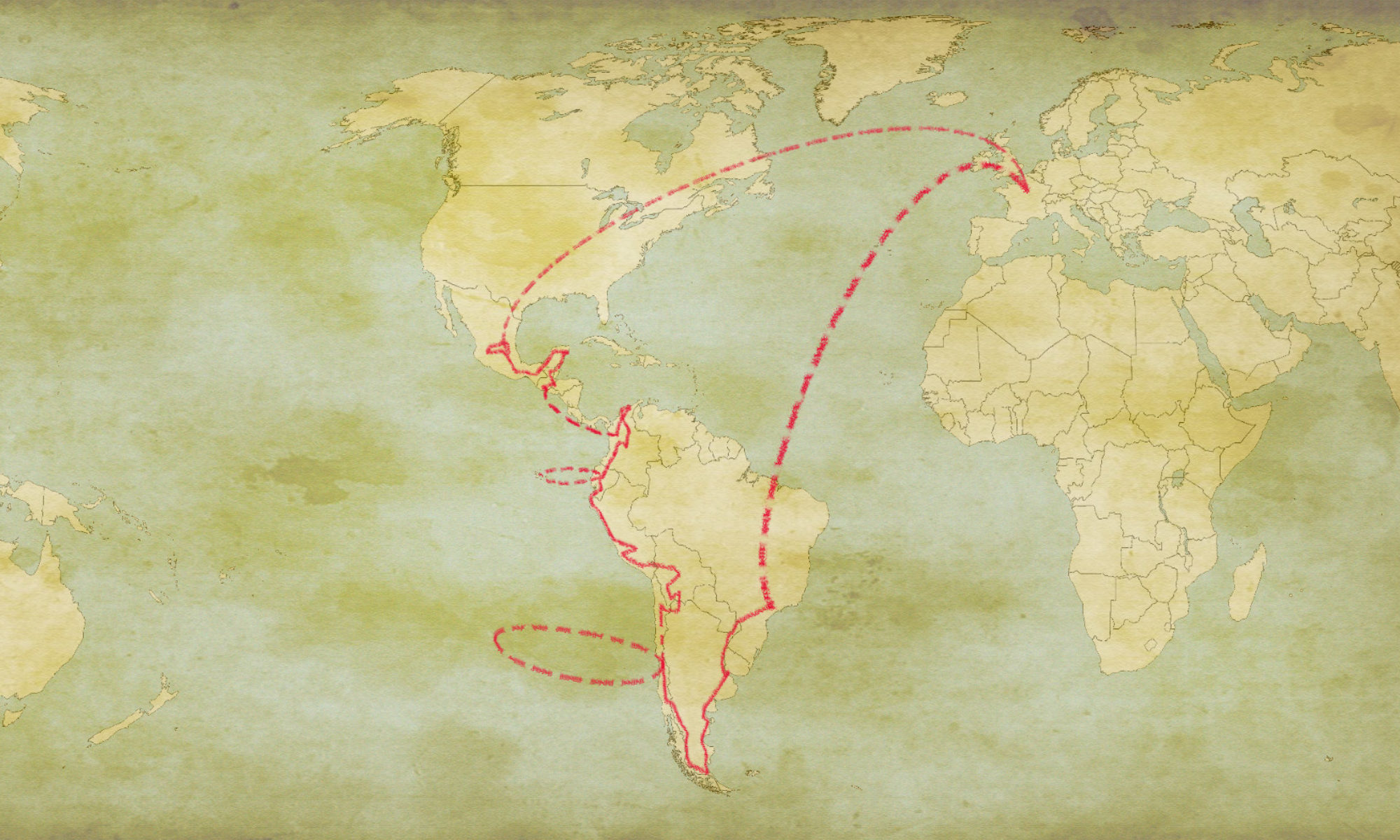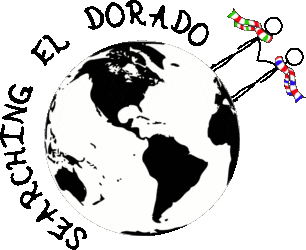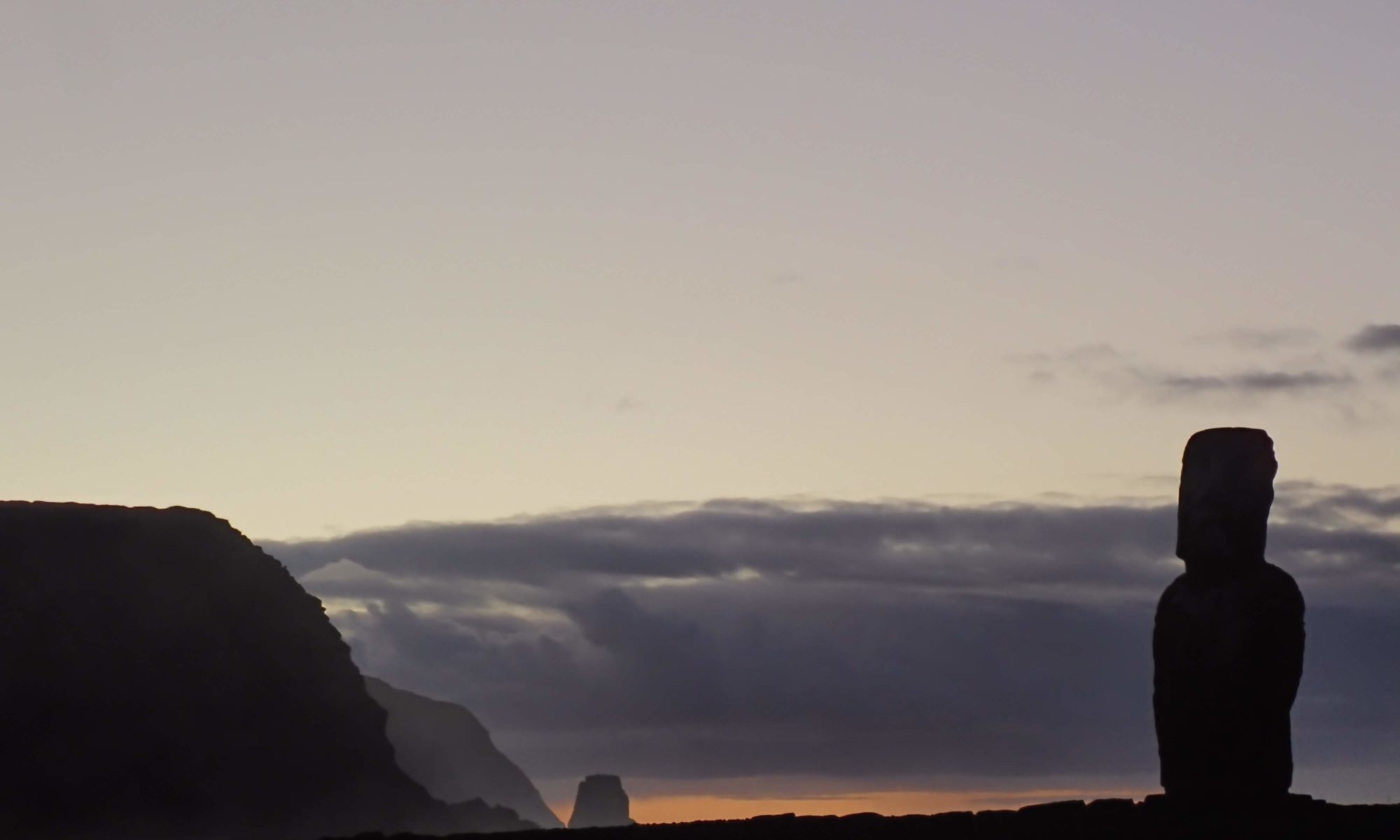Isla de Pascua, or Rapa Nui in the native language, is a little island lost in the middle of the Pacific ocean. It is more than 2000 km away from the nearest inhabited land and 3500 km away from the coast of Chile. Polynesians canoes were the first to be able to cover such enormous distances. Legends says they arrived in Anakena, the only beach of the island. Whether this is true or false, the fact is that this part of the island became the land of the kings.
The villages
The first settlers, before constructing proper houses, lived in the numerous caves scattered along the island. Many of these caves were actually used for a long time. They also provided refuge in wartime and, because of that, some of them became tombs.
The typical Rapa Nui village consisted of around 10 houses, each of which hosted a single family. They had a low thatched roof and a stone base. Holes were made in the stones in order to hold the sticks forming the frame of the roof. Since the weather on the island is always temperate, they were used basically only for sleeping. They had really small entrances, forcing people to enter on their knees. As a result, it was easy to control who was getting in and out.
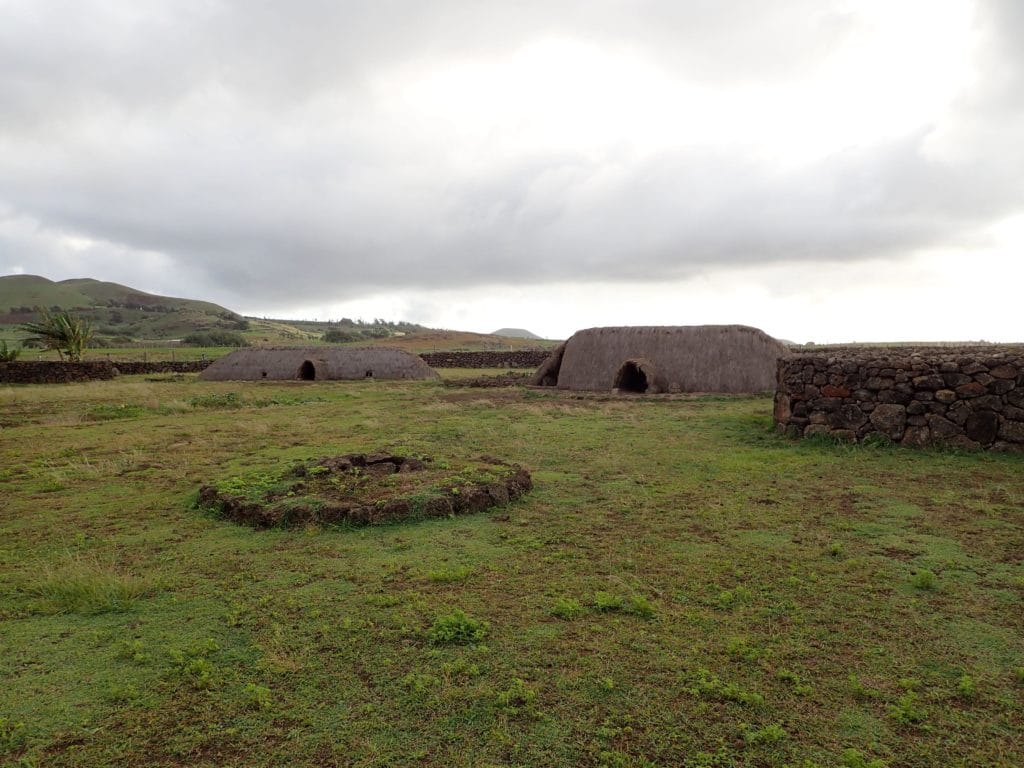
Close to the houses, you could find hen-houses. Since rocks are the most abundant resource on the island, the hen-houses were composed only of that. Small rocks were used to create an hollow box. However, only two or three unmarked rocks could be removed to let the chickens out. By removing any other rock, the hen-house would collapse on the chickens. This method ensured safety against possible thieves since only the creator of the hen-house would know which rocks could be removed.
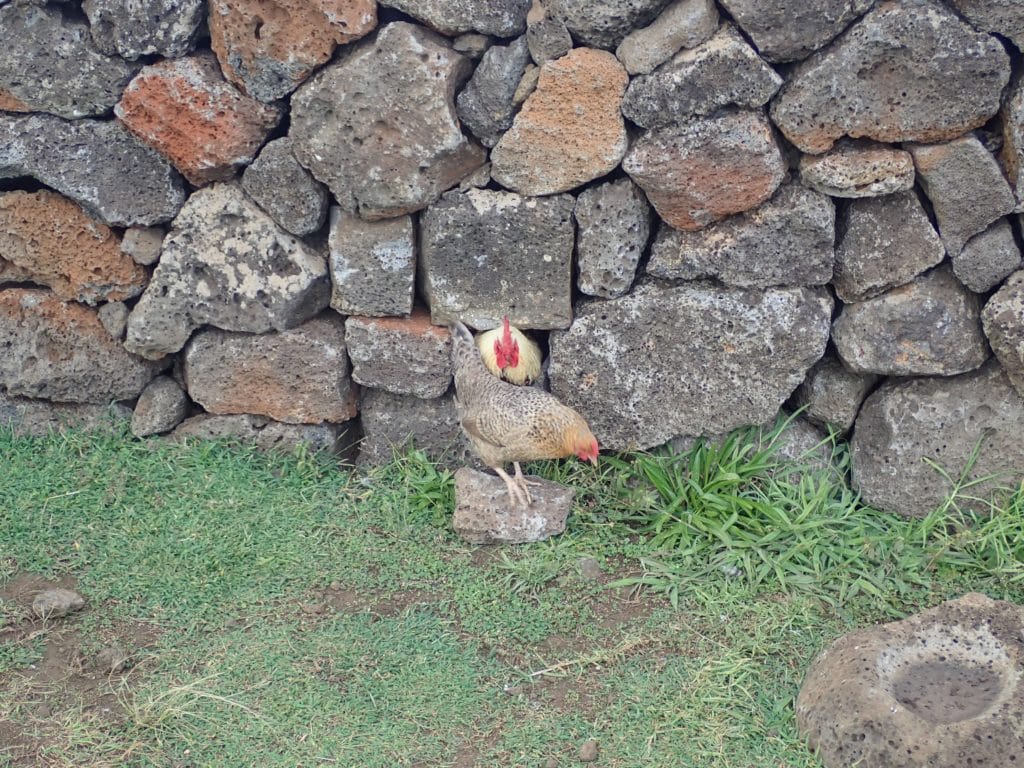
Rocks were also used to build the manavai. A manavai is a small wall, or a part of ground covered in rocks, around a plant. It protects the plant and the surrounding soil from direct sunlight and the salty wind coming from the sea. The use of manavai allowed to grow plants not only as food but also for other purposes. For instance, the mahute was used to prepare clothes.
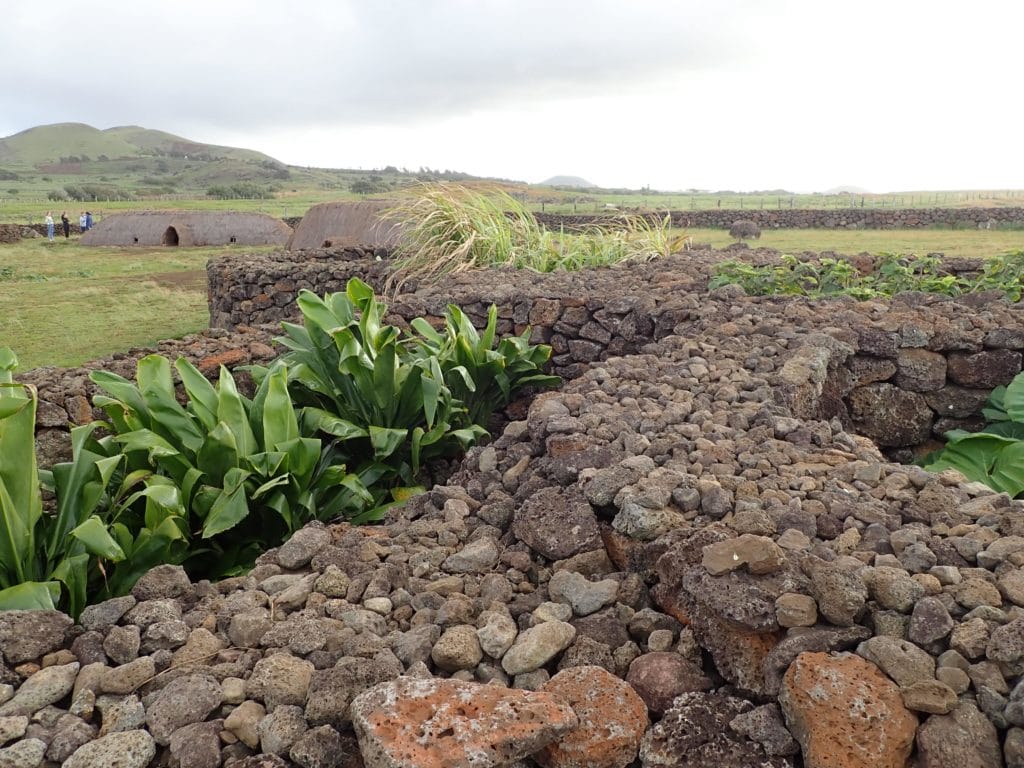
Famine
Famine struck Rapa Nui more than once. But long periods without rain were not the only calamity. In addition, Polynesian rats hitched a ride on the first boats that reached the island. Without any predator, they reproduced without control, eating most of the seeds planted in the ground. Some estimation say that their number could have exceeded the 3 millions. The European rat eventually replaced the Polynesian rat. However, only the introduction of cats and dogs helped with the control of their population.
Moais
Around the year 1250, the wealthy people of Rapa Nui started to build enormous statues to honor their ancestors. These statues, called moai, were composed of two stones. The bigger was carved to represent the body and face of the dead. A smaller was then placed on top of it, representing not a hat but the hair of the statue.
Moais were placed on ceremonial altars called ahu. The highest level of the ahu was the pedestal for the moai, while the intermediate worked as a tomb. The lowest level was reserved for the ceremonies. Ahu were usually positioned along the coast, close to the village. The moais were always looking toward the village, protecting it, their back facing the sea. This closeness to the sea reflected the fact that the higher classes controlled the access to it. Each fishermen needed to pay a fee for the right to use their boats.
As a consequence, the moais were a symbol of both religious and political power. Knocking down a moai of a different village was considered a terrible crime that would lead to war.
Construction
All of the Rapa Nui moais were carved in the volcano Rano Raraku. The hair on the other hand, made of a different and more fragile stone, came from the site of Puna Pau, locate on another side of the island.
The builders were not slave, but paid workers hired from the noblemen. The first moais were around 2 m high, but, as the carver became more and more skilled, they started increasing the size of the statues. The biggest erected moais were 14 m high and weighted more than 80 tons. An unfinished moai in Rano Raraku would even have been 21 m high, but its construction was abandoned.
The carvers were starting from the front of the statue, working their way to the back. They were also preparing a hole in the ground, downhill from the carving point. Once it was prepared, the moai would slide in the hole. The back was then refined and details, like the hears, were added before transporting it to its final location, the ahu. When visiting the quarry nowadays, you can still see the head of the moais that never passed this stage of the construction and remain in their holes.
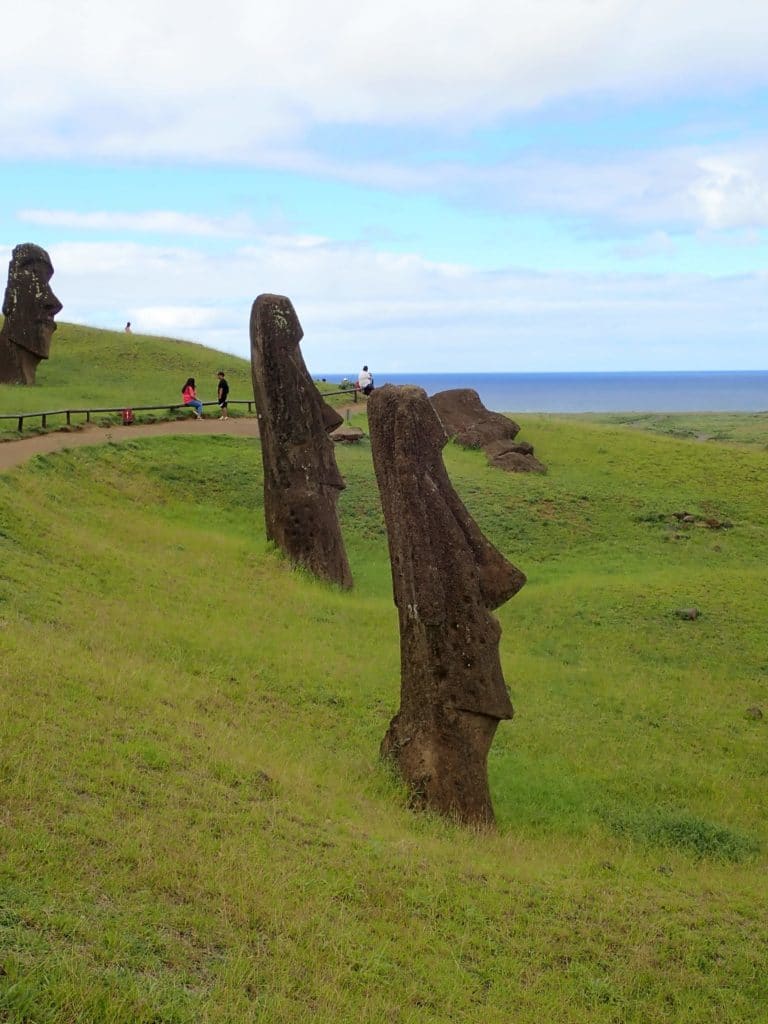
Transportation
There are many theories on how the moais were transported to the different ahus, sometimes kilometers away from the quarry.
One theory states that they were using sledges, or rolling them over logs. This would also explain the deforestation of the island. However, the problem with this theory is the amount of people necessary for moving moais weighting several tons.
Another theory states that ropes were tied around the head, on three different sides. The moai was then made walking by tilting it on the sides. The shape of the base was also helping to move it forward. This technique did not required many people and it was recently successfully tested in a university.
While really effective on flat surfaces, the tilting technique was of difficult application up or downhill. Therefore, a combination of the different techniques is probably the solution to this mystery.
End of the moai era
The whole process, from the start of the construction to the placement of the moai, could require up to one year and a half. During this time, the contractor needed to pay, mainly with food, all the workers. The lack of resources caused from the famine had, as a consequence, the stopping of the moais creation. Another theory links this situation to the toppling over of all the moais on the island. They were supposed to protect the people, but the famine would not stop. Consequently, people stopped believing in them and knocked them down as a sign of protest.
That is to say, if you see a moai standing up, it was restored in modern times.
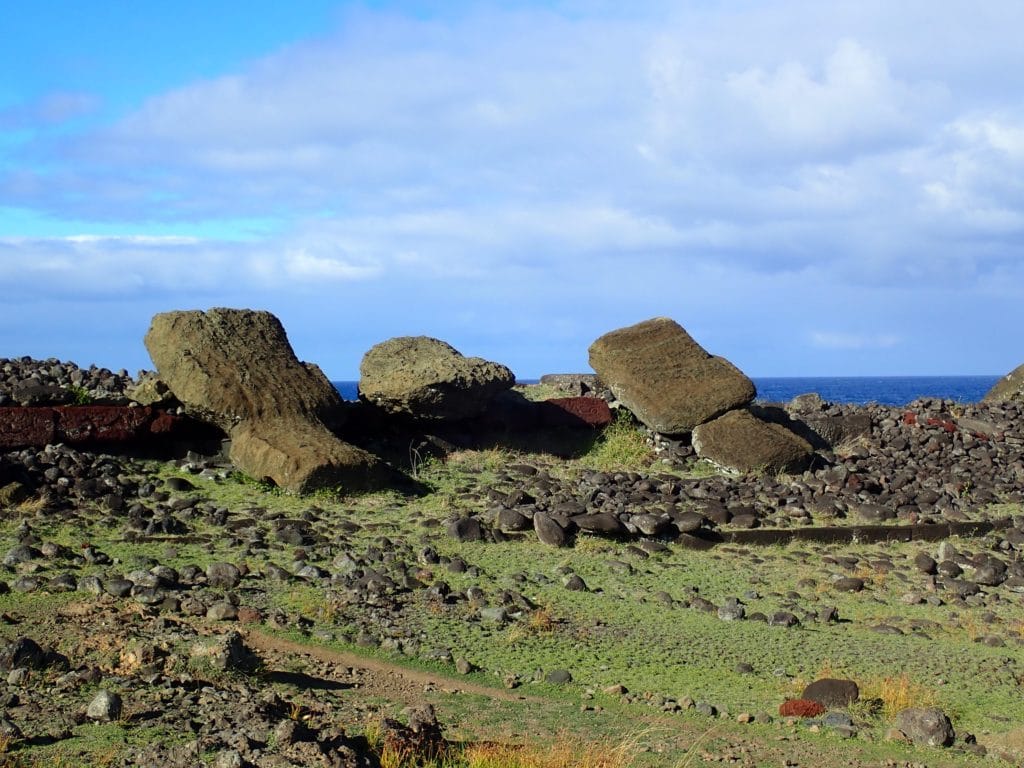
Another reason for the abandoned tradition was the raise of a monotheistic religion: the bird-man cult.
The bird-man cult
A competition was held to elect the Tangata Manu, the bird-man, who would be both a spiritual and a political leader. The noblemen would chose someone, always a man, to run on their behalf.
These champions, called hopu, started their race from Orongo. This ceremonial village is located at the top of an old volcano, 300 m above sea level. From there, they had to descend the steep cliff and swim until the small island of Motu Nui. Here they had to collect the first egg of sooty tern, a migratory bird. Sometimes they had to wait for several days, without any food or water, for the birds to arrive.
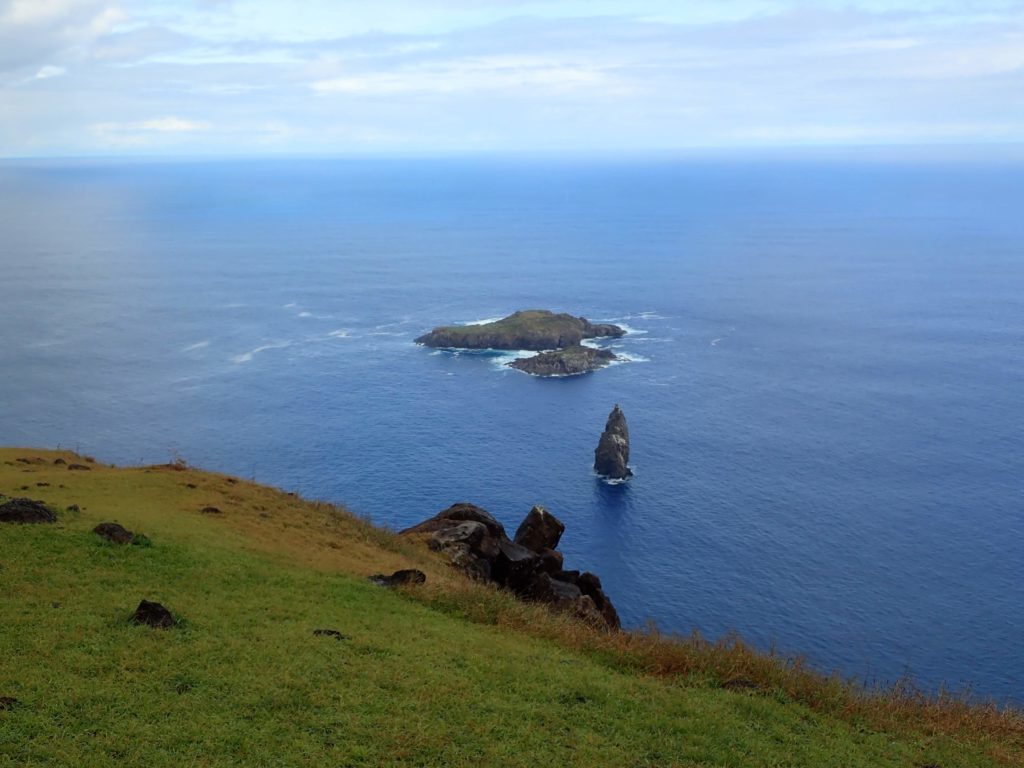
Once the egg was collected it needed to be returned intact to Orongo. After that, the nobleman, passed an isolation period, was ready to rule for the rest of his life.
The competition was brutal and many died falling from a cliff, drowning, or as a consequence of the sharks attacks.
The Christians missionaries forced the population to drop the tradition in the 1860s.
Rapa Nui today
After the 1860 the Rapa Nui population had to suffer mass enslavement (in 1862), epidemics, and, until lately, land subtraction from the government of Chile. All of these affected an already decimated population as a consequence of the famine.
In 1966 the situation for the Rapanui improved considerably. Firstly, they obtained the Chilean citizenship. Then the first commercial flight arrived after the opening of the island. Tourists and materials to, for example, build houses, started reaching the island. In the last 20 years the population living on the island has more than doubled.
The people are bilingual, using both Spanish and Rapanui. The latter, while not a mandatory subject, can be studied in school. There are also intensive courses that kids can take for one year.
We felt like every person we talked with on the island was proud to be Rapanui and of his history.
Do you want to organize your visit to the island or to know more about it? Check also our other post about it!
To not miss any of our adventure subscribe to our newsletter!
